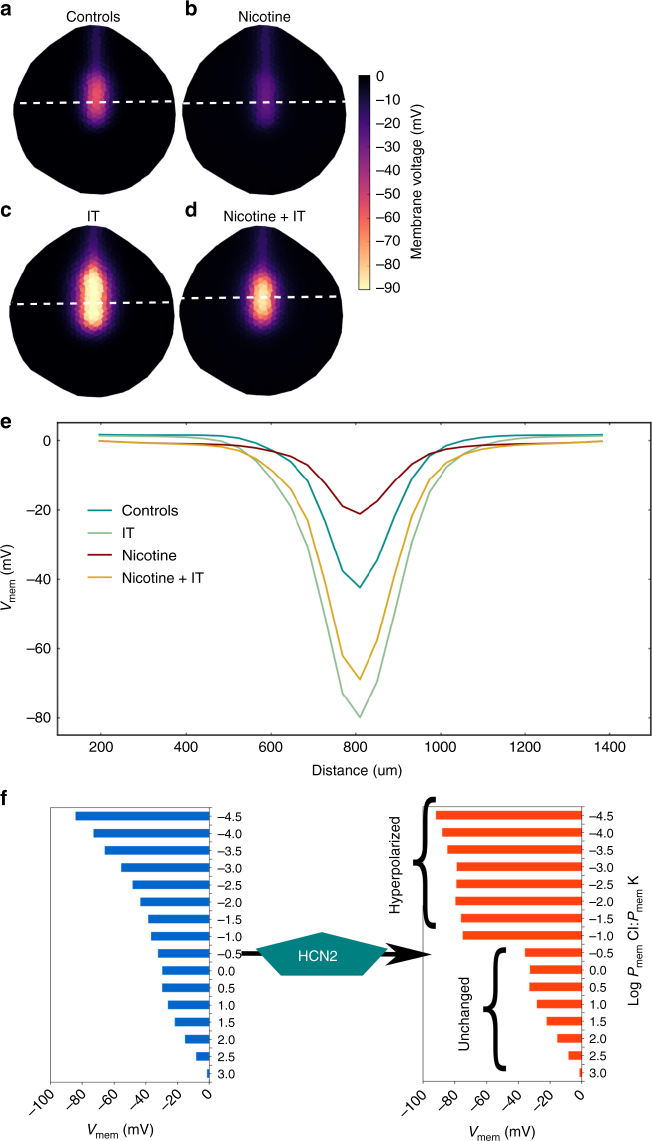Fig. 3.
BETSE model predicts that nicotine suppresses neural tube hyperpolarization and HCN2 recovers neural tube hyperpolarization in presence of nicotine. a–e BETSE model of a stage 15 Xenopus embryo where cells are assumed to be facing 0.1 × MMR. a Control model exhibits a characteristic Vmem pattern featuring relative hyperpolarization in the neural tube area and depolarization everywhere else. This Vmem pattern is actually seen in the Xenopus embryos with voltage reporter dyes28. b Nicotine treatment of the control model is predicted to preferentially depolarize the neural tube area to suppress the Vmem gradient. c Model with ion translocator (IT) expression in all cells, acting in a context-specific manner showing strongly enhanced neural tube Vmem pattern. d Adding the ion translocator (IT) to the nicotine treated model shows the Vmem pattern significantly retained in comparison to the only nicotine treated model of b. e Line graph showing the information retrieved along the white dotted lines depicted in (a–d), which allows for easy comparison between models. f The effect of the HCN2 channel on the Vmem of a series of cells with different membrane leak permeabilities (Pmem). The ability of homogeneously expressed HCN2 channels to act in a context specific manner is predicted to stem from the channels’s opening at hyperpolarized Vmem with a hyperpolarizing effect upon opening. This selectively hyperpolarizes cells while leaving relatively more depolarized cell’s Vmem unchanged. This further emphasizes that HCN2 channels amplify the endogenous Vmem pattern of the neural tube and maintain the Vmem pattern against nicotine depolarization exactly like IT in (c, d and e)

